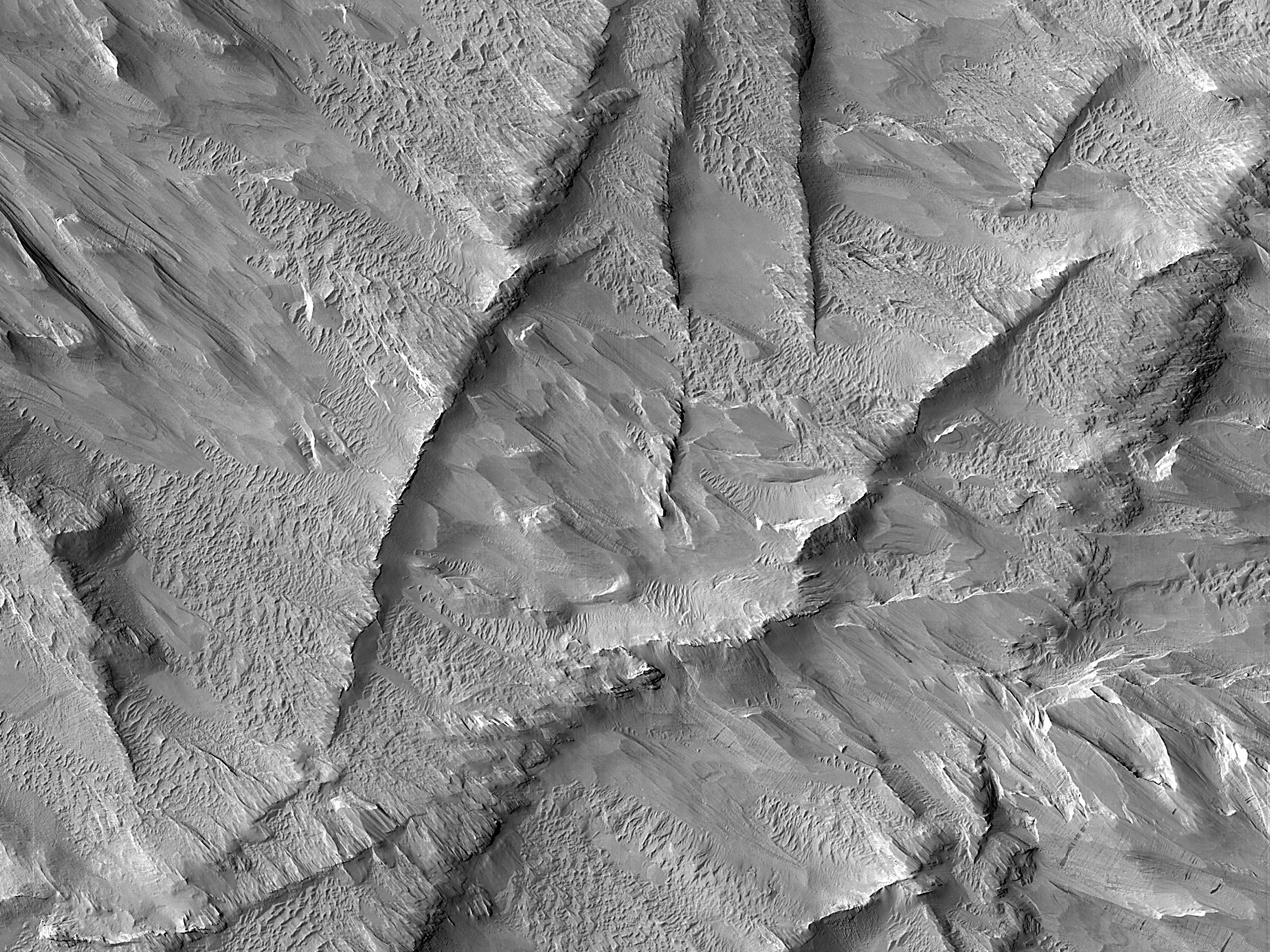This image shows a group of curved ridges in an area called Lycus Sulci, which is located near the Olympus Mons volcano. Much of the rocks in this area have been subjected to erosion (e.g., scouring and removal) by the wind, so that the surface we see today was originally buried deep underground.
Ridges such like these typically form underground through diagenesis, a process where water flows underground and minerals start to form from chemicals within the groundwater. These minerals are typically most abundant in places such as cracks, where the water can easily flow and minerals have room to grow. The mineral-filled cracks are more difficult to erode than the surrounding rocks and thus can form ridges such like these when the weaker surrounding rocks are eroded away.
ID:
ESP_077982_1920date: 16 March 2023
altitude: 279 km
https://uahirise.org/hipod/ESP_077982_1920
NASA/JPL-Caltech/University of Arizona
#Mars #science #NASA
